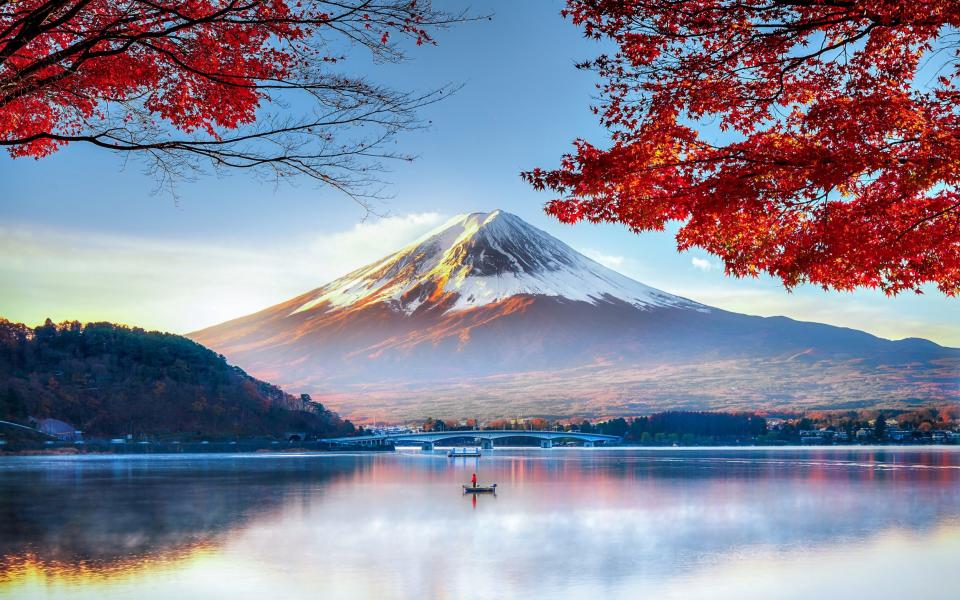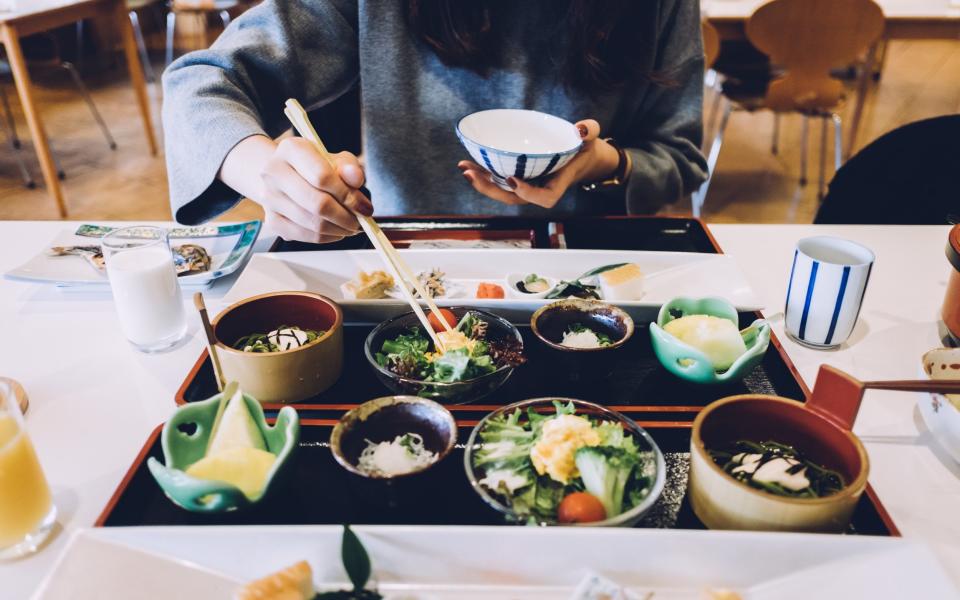A falling yen has helped fuel a tourism boom in Japan. About 33 million visitors are expected this year, a new record – and a million more than pre-pandemic levels. But not everyone is celebrating.
In April, the small town of Fujikawaguchiko made headlines when it took a tough step against “overtourism” by installing a blocking black curtain to block a popular viewpoint (and selfie spot) of Mount Fuji. Now, with a raft of new restrictions in Tokyo, Kyoto and elsewhere, the trend appears to be spreading.
“These restrictions are in response to very real problems,” says Rebecca Hallett, a Japan expert who has visited the country more than a dozen times. She says the Japanese remain generally hospitable to tourists, but among a significant minority, patience for bad behavior is wearing thin.
Here are some of the new rules that have come into effect:
Luggage fees on trains – £5 per bag
Lugging your bags onto the train may seem like an inevitable part of travel. But Japan’s cheap courier services mean locals prefer to ship their luggage in advance. As a result, they’re less than enthusiastic about cumbersome suitcases clogging up aisles or taking up seats on busy commuter trains
Earlier this year, the Shinkansen rail network introduced an additional fee for anyone carrying a bag that is 160cm tall or higher. You’ll be expected to pay ¥1,000 (£5) per bag.
No access to Geisha streets – £50 fine

Gion, the famous Kyoto district home to geisha tea houses, is a must-see for tourists, but in recent years visitors have been behaving increasingly badly, including harassing geishas in order to get the perfect souvenir photo.
Kyoto, in contrast, has banned tourists from entering the historic private streets between teahouses, and anyone taking a photo of a geisha without permission risks a fine of ¥10,000 (£50).
Locals-only dining nights and Japanese-only discounts
Japan is among the world’s top culinary destinations, but some businesses are trying to protect their patrons from the international influx. An okonomiyaki restaurant in Hiroshima has banned tourists on Friday nights and reserved its tables for locals only.
Others take a more subtle approach. In Tokyo’s Shibuya district, the small print on the menu (written in Japanese) states that all locals will receive ¥1,000 (£5) off their total bill.
Special bus routes just for tourists
Clean and efficient public transport is a source of pride for Japan. But the surge in tourists means some busy services run slower than usual. In response, Kyoto has created special tourist-only buses that take you straight to popular landmarks without inconveniencing passengers.
Reminders on Japanese etiquette and not loitering
Japan is considered a land of impeccable manners and new customs. But how many tourists take a crash course before they go there? Tired of the constant violations, Kyoto has launched a new poster campaign (which may or may not coincide with a 50% increase in American visitors).
A new “Mind Your Manners” campaign will remind English-speaking visitors of local customs. It includes basics like not littering or shouting, but also encourages them not to loiter in large groups (a tricky topic for group trips).
Restrictions on Mount Fuji – plus £10 fee


Like other world-famous tourist attractions, Mount Fuji can get a little crowded at times. As of this summer, authorities have capped the number of daily visitors at 4,000 and introduced new fees (¥2,000/£10) for those using the popular Yoshida Trail. Other popular sites are taking a similar approach: the Studio Ghibli museum in Tokyo now limits daily visitors to 3,500 on weekdays and 4,000 on weekends.
There are no tourists on the fastest trains
Tourists love the Japan Rail Pass, which allows unlimited use of the Shinkansen rail network for a limited time. However, you should be aware that the rail pass does not cover: All services – particularly the faster Nozomi and Mizuho services. While these routes are only a few minutes faster, they rely on locals getting on and off in seconds – and so don’t have time to wait for uninformed tourists.
Tourists pay extra – up to four times more
Although common in other Asian countries, the idea of charging foreigners more remains taboo in Japan. So is the tide turning?
This month, it was reported that ancient Himeji Castle may soon charge a quadruple entrance fee (¥4,000/£20) for foreign nationals. The local mayor defended the additional costs by saying locals already contribute to the castle’s upkeep through their taxes.
Higher tourist taxes – up to £9.80 per night
Like their European counterparts, Japanese cities are increasing the daily rates paid by tourists, but the figures are not eye-watering.
Anyone staying overnight in Kyoto will now pay a daily tourist tax for a hotel room, ranging from ¥200-1,000 (£1-5) per night. The northern island of Hokkaido, known for its ski resorts, now charges each guest an additional ¥2,000 (£9.80) per night.


Sending visitors elsewhere
Don’t worry; Japan isn’t planning to direct tourists to Timbuktu, but the government wants visitors to spread out beyond the hotspots (72% of foreign tourists stay in Tokyo, Osaka and Nagoya, according to official figures).
The country is currently promoting 11 lesser-visited destinations, including the samurai heartland of Hokuriku and the Nagano Alps.
“I had a wonderful time in Shimane a few years ago – watching kagura performances, visiting Japan’s oldest temple and drinking sake where it was invented,” says Japan expert Rebecca Hallett. Better yet, only 0.1% of overseas tourists currently go there.
But luxury travel enthusiasts are also welcome…
While loud influencers are frowned upon, another class of traveller can get the red carpet treatment – perhaps literally. Japan’s tourism authorities are now focusing on maximising the number of “luxury tourists”, defined as those spending more than ¥1 million (around £5,000). If you’re one of them, good news.